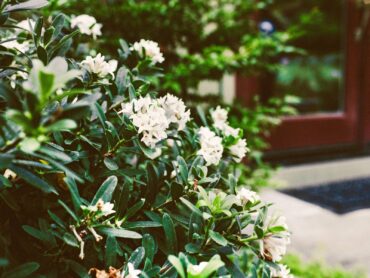
Editor’s note: This article was adapted from “The Garden Refresh,” a newly released book by Kier Holmes. Published with permission.
Smell, sound, taste, touch, and sight — incorporating all five senses in your design creates a dynamic and well-rounded garden experience. And your garden doesn’t have to be elaborate or massive to achieve this. Small and simple choices add up to a space that is inviting and calming, gifting visitors with a sensory boost.
Smell
If I had to choose my favorite thing about plants, fragrance would be number one. I seriously seek out flowers I can eagerly poke my nose into and leaves I can gently crush between my fingers for perfumed inhales.
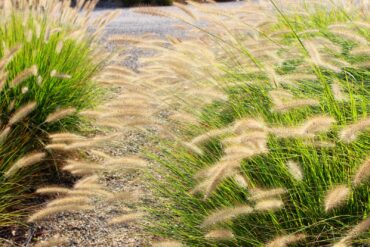
Fragrances invoke some of our strongest memories and emotions — my earliest childhood plant memory is smelling sweet gardenias warming up in the Southern California sun at my grandma’s house. Despite its powerful link to our memories, fragrance is sometimes a forgotten element in planning a garden. Luckily, plants offer such a wide array of scents that it’s easy to weave herbal and floral aromas into every garden space.
One idea for incorporating fragrance is to place fragrant plants in strategic spots around the garden, such as near entry paths and lounging areas. You can also add a sensory surprise by planting fresh-smelling ground covers between pavers — options like spicy thyme or sweet chamomile will emit a scent when stepped on.
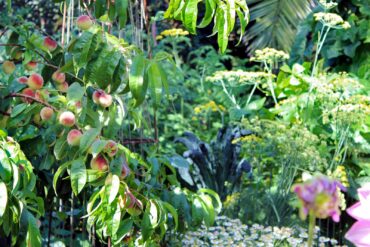
Think carefully about your fragrant plant choices near eating areas, as you might not want to smell perfumy jasmine while chowing down on smoky barbecue. And because fragrance is a completely personal matter, make sure you and your family members smell any scented plants at a nursery or botanical garden before investing in them.
The best time to appreciate a plant’s perfume is on warm, humid days before noon, and the least fragrant experience happens on hot, dry days. There are also some plants that only release their loveliness as dusk falls (night phlox, tobacco plant and night-blooming jasmine), so plant those near open windows, well-used paths and evening gathering spots.
Some of my favorite plants for adding fragrance to a garden are scented geraniums, which emit a wide array of tempting aromas, including apple, rose, mint, citrus and even coconut. There’s no trickery or chemicals to worry about with these natural air fresheners — the plants are blessed with special glands at the base of their leaf hairs that secrete small beads of fragrant oil. Pelargonium ‘Charity,’ ‘Grey Lady Plymouth’ and ‘Attar of Roses’ all have lovely rose scents; Pelargonium quercifolium has a spicy, sometimes piney scent; and Pelargonium ‘Chocolate Peppermint’ smells of, well, chocolaty peppermint.

Top plants with fragrant foliage:
- Bee balm (Monarda didyma)
- Catmint (Nepeta spp.)
- Hyssop (Hyssopus officinalis)
- Incense cedar (Calocedrus decurrens)
- Lavender (Lavandula spp.)
- Lavender cotton (Santolina chamaecyparissus)
- Lemon balm (Melissa officinalis)
- Lemon marigold (Tagetes tenuifolia)
- Lemon verbena (Aloysia citriodora)
- Mint (Mentha spp.)
- Rosemary (Salvia rosmarinus)
- Sage (Salvia officinalis)
- Scented geranium (Pelargonium spp.)
- Sweet bay (Laurus nobilis)
- Thyme (Thymus spp.)
- Yerba Buena (Satureja douglasii)
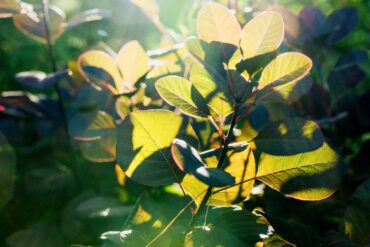
Top plants with fragrant flowers:
- Daphne (Daphne spp.)
- Datura (Datura spp.)
- Fragrant sweetbox (Sarcococca ruscifolia)
- Gardenia (Gardenia jasminoides)
- Jasmine (Jasminum officinale)
- Lavender (Lavandula spp.)
- Lemon (Citrus limon)
- Lilac (Syringa vulgaris)
- Magnolia (Magnolia grandiflora)
- Night-blooming jasmine (Cestrum nocturnum)
- Pink (Dianthus spp.)
- Rose (Rosa spp.)
- Sweet pea (Lathyrus odoratus)
- Trumpet flower (Brugmansia suaveolens)
Sound
Comforting, calming sounds enhance the benefits of spending time outdoors in a natural setting. Bird feeders and birdbaths encourage winged visitors whose chirps, chortles and escapades add an entertaining natural musical element.
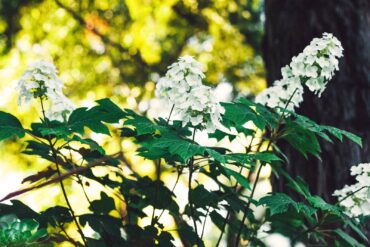
The sound of water is soothing and has positive effects on a person’s well-being and psyche, so consider adding a small water feature to your garden. Something as simple as a bubbler in a well-chosen, water-filled vessel can do the trick.
For even more music, collaborate with the wind and add a subtle wind chime (though, if you position it near a neighbor’s yard, make sure the sound it creates doesn’t bother them, or your neighbors may unfortunately turn into enemies whenever the wind blows). Even your choice of hardscape can add to your auditory tapestry. Think of the hollow sound of shoes on wood decking or the beachy crunch of gravel underfoot.
Touch
For a tactile experience, add texturally interesting plants that are fuzzy, shiny or satiny to areas where people walk and could easily touch them. Spikey and thorny plants provide visual texture too, but plant them safely out of reach.
Don’t forget about the effects of airflow and temperature on your skin. Some days, you might want to feel a cooling breeze on your face, but at other times, a little shelter feels welcoming. Similarly, a warm, sunny spot can be heaven on cool days, while a relaxing spot in the cooling shade soothes overheated skin.
Taste
Maximize your space by challenging old-fashioned ideas of keeping edible and ornamental plants separate. Vegetables and fruits can be added to any garden space, even mingling among perennial beds. This way, you always have the opportunity to harvest a quick, delicious snack. Berries, snap peas and any other crops that can be picked and popped directly into your mouth are ideal for lazy grazing since you don’t need to go inside to prepare them.
Sight
Sight is, of course, the first sense most people think about when planning a garden. We all have our favorite colors and shapes (my favorite color is orange). But color isn’t the only important garden visual.
Think of a garden at dusk. As the sun sets, certain plants transform, glowing and even sparkling when backlit by low, golden rays. When creating a garden you’re planning to frequent at the end of the day, place illuminating plants where they can catch these last hints of light.
To maximize the effect, look for plants with leaves and flowers in shades of red, orange, yellow or chartreuse that are fine, thin and almost translucent. If your garden is shaded or in a spot that doesn’t receive sun at sunset, white flowers are a good way to hold on to the last morsels of daylight, as they will stand out and glow against green backgrounds.
When you want a visual exclamation point, consider what are known as architectural plants. These aren’t plants that belong inside or are used to make buildings, but rather plants that have their own architecture — bold, distinctively outlined and strongly shaped. These stars of the show provide contrast to softer shapes and grab the viewer’s focus, which can be useful if you want to direct attention to certain areas.
Architectural plants are generally larger than the plants surrounding them, and, unfortunately, most are more expensive. But because they can bring a distinctive presence to a garden all year long, they are definitely worth the investment.










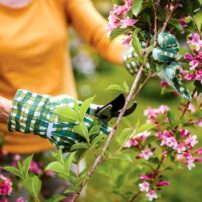

















Comments